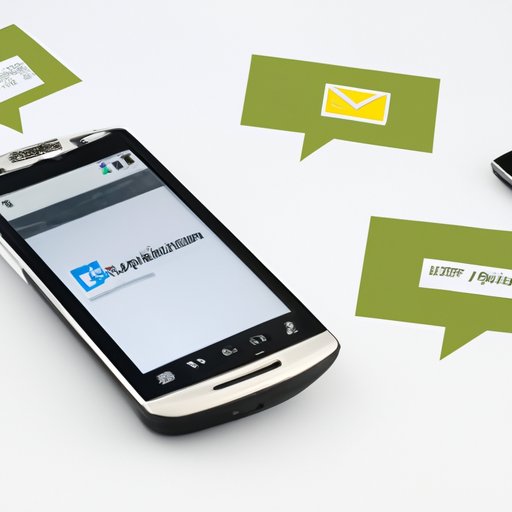Introduction
Do you often find yourself facing the problem of your iPhone not sending text messages to Android? This can be a frustrating issue, especially when you want to reach out to your friends or colleagues who own Android devices. With the prevalence of texting as a primary mode of communication, it’s crucial to have cross-platform texting capabilities and to understand the reasons behind its malfunctioning.
Troubleshooting Guide
Here’s a step-by-step guide to help you fix the issue:
Check for Software Updates
One of the most common reasons for messaging errors is an outdated software version. Check if your iPhone is running the latest version of iOS, as Apple usually releases updates to fix bugs and enhance overall performance.
Check If iMessage Is Turned Off
Make sure that iMessage is turned off on your iPhone. To do so, go to Settings > Messages > iMessage and toggle this switch off. Once you’ve done this, try sending a text message to an Android user and check if it goes through.
Verify Phone Number and Contact Information
If you recently switched to a new iPhone, ensure that your phone number and other contact details are correctly updated. Verify that your phone number is listed under ‘Send & Receive’ in the Messages Settings.
Reset Network Settings
If your iPhone is not sending text messages to Android, it could be a network problem. Resetting the network settings may help resolve the issue. You can do this by going to Settings > General > Reset > Reset Network Settings.
Check for Blocked Contacts
If you’re not able to send text messages to a specific Android user, it’s possible that you’ve blocked them accidentally. Go to their contact information and check if they’re blocked. If so, unblock the contact and try re-sending the message.
Contact Your Carrier if None of the Above Solutions Work
If none of the above troubleshooting steps work, it’s time to reach out to your carrier. They’ll be able to guide you through advanced methods and testing to fix the issue.
Network and Carrier Issues
To understand network and carrier issues that prevent cross-platform texting, it’s essential to know how Wi-Fi and cellular networks impact messaging capabilities.
Wi-Fi and Cellular Networks
While Wi-Fi is a reliable and affordable way to stay connected, it can sometimes interfere with messaging, especially in areas with a weak signal. On the other hand, cellular networks often offer a stronger and more stable signal, which may be preferable for messaging.
Tips for Resolving Network and Carrier Issues
If you’re experiencing network and carrier issues, try switching between Wi-Fi and cellular networks to see if that fixes the problem. Also, try resetting your Wi-Fi connection and turning on/off Airplane mode.
iMessage vs. SMS/MMS
It’s essential to understand the difference between iMessage and SMS/MMS to comprehend how cross-platform texting can be affected.
Difference Between iMessage and SMS/MMS
iMessage is an Apple’s proprietary messaging service that allows for free messaging between Apple devices using an internet connection. SMS and MMS, on the other hand, are standard messaging services that allow text messages to be sent via mobile networks.
How iMessage Can Affect Cross-Platform Texting
When iMessage is turned on, it slows down the messaging process, and messages tend to get stuck between Apple and non-Apple devices. Therefore, it’s essential to disable iMessage while texting Android users.
Solutions for Texting When iMessage is Unavailable
If iMessage is down or unavailable, you can use SMS/MMS to communicate with Android users. However, some media files may not be supported by the SMS format.
Compatibility Problems
Compatibility issues between iOS and Android devices are prevalent, and they can often lead to messaging problems.
Compatibility Issues
Apple treats messages originating from Android devices as an MMS, which often limits the number of characters that can be included in the message. Additionally, messages from Android users may be delayed or not delivered to iOS devices.
Tips for Ensuring Compatibility Between iOS and Android
To overcome compatibility issues, try using messaging apps like WhatsApp, Facebook Messenger, or Telegram that enables users to communicate with other users irrespective of their mobile device OS.
Unique Features and Solutions
iPhone and Android devices have unique features that can help overcome cross-platform texting problems.
Take Advantage of Unique Features
If you’re an iPhone user trying to message an Android user, try using apps like Google Voice or Google Allo, which is available on both the Android and iOS platforms.
Conclusion
We’ve covered various reasons why an iPhone may not send text messages to Android users, including software updates, carrier issues, and compatibility problems. The tips and solutions we discussed should help you overcome these issues and improve cross-platform texting capabilities. If you’ve had similar experiences or have additional suggestions, do share them in the comments.
